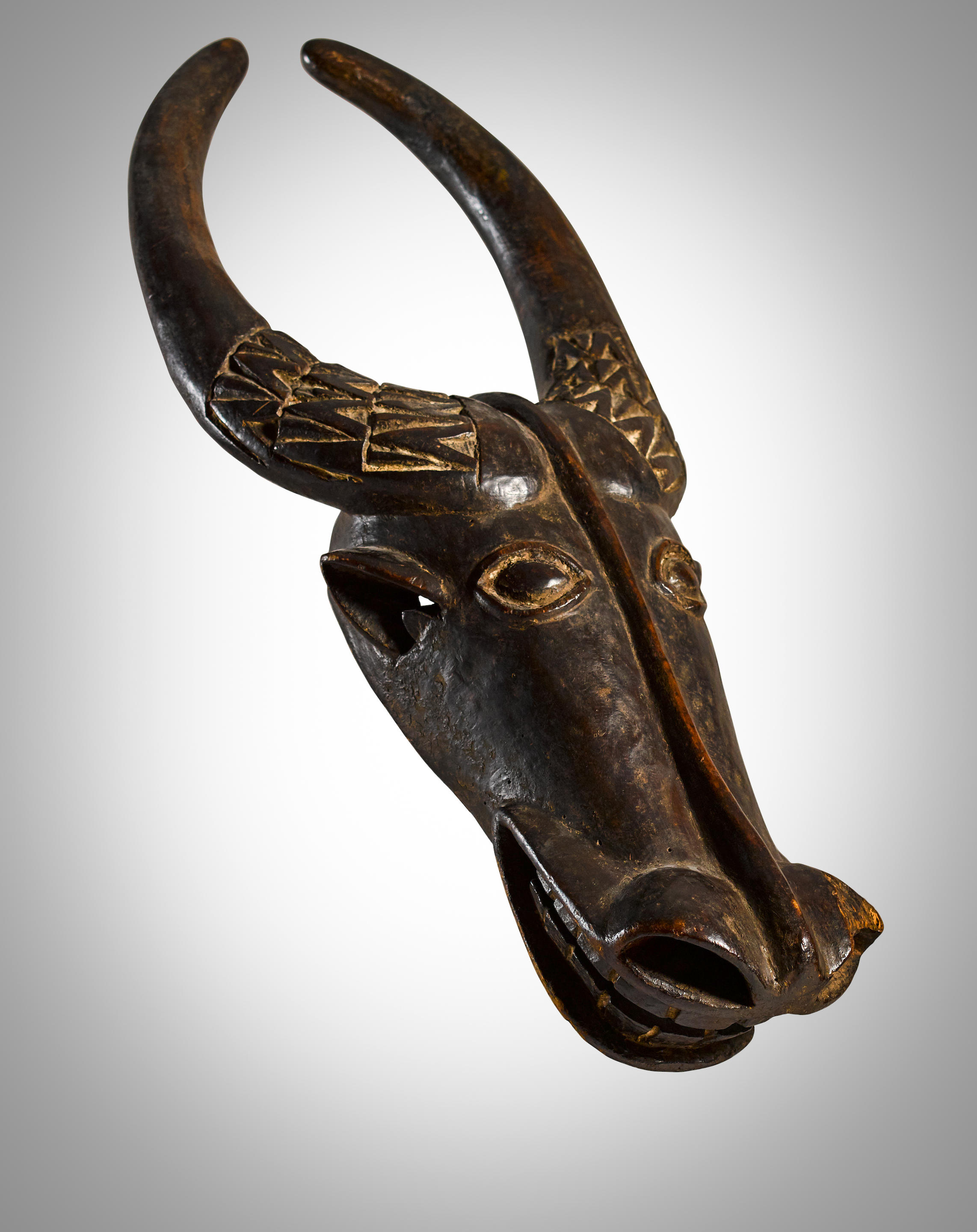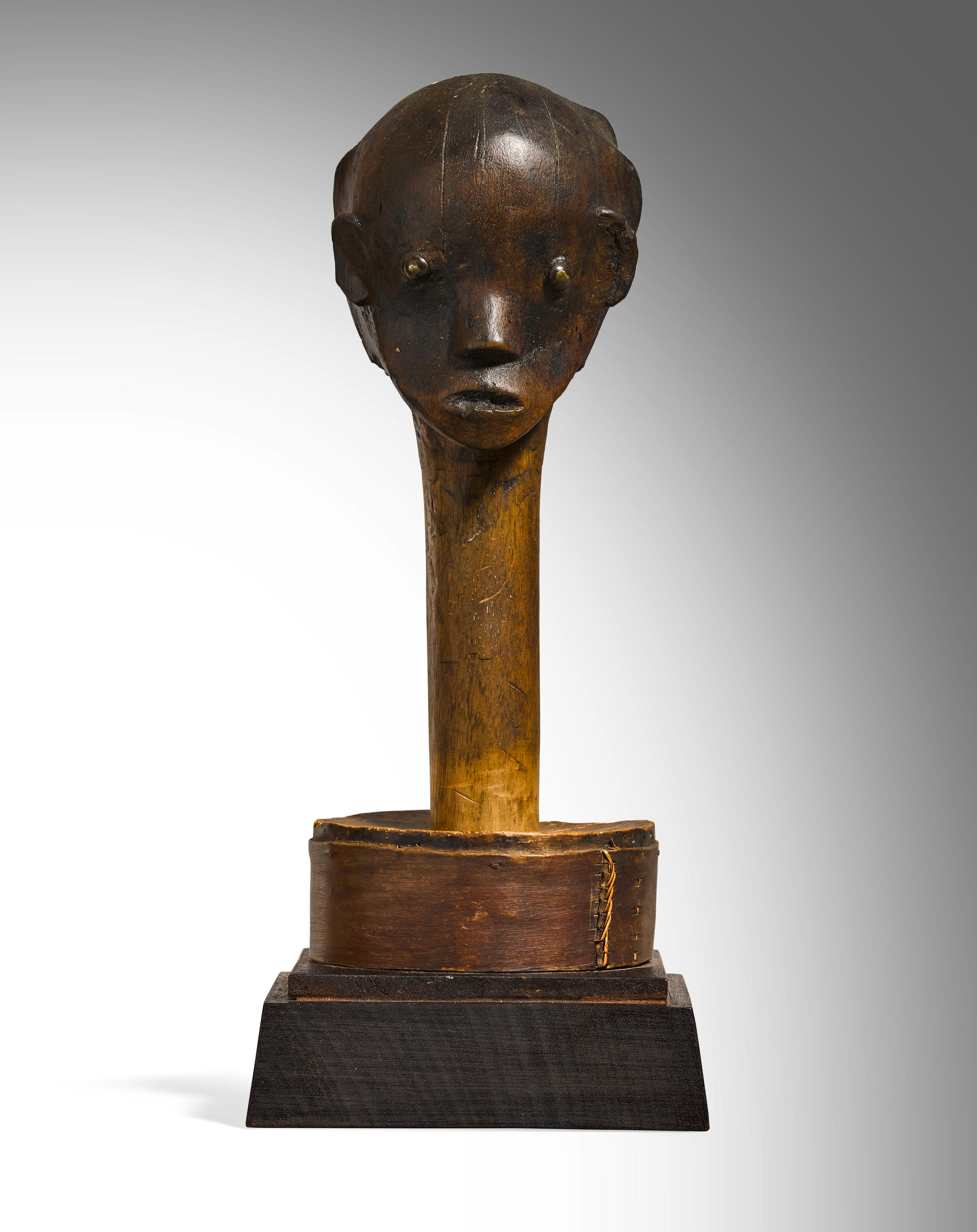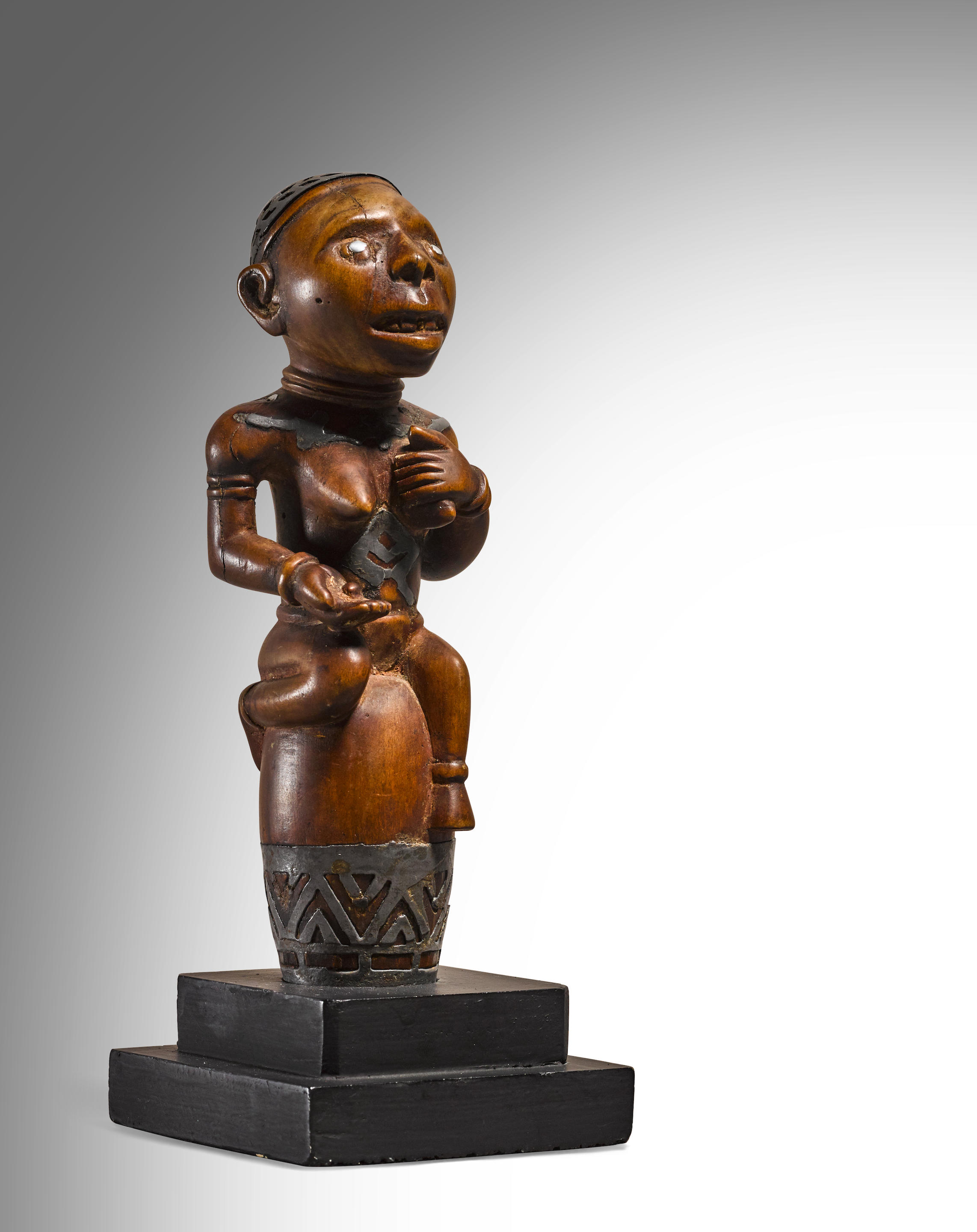kinkalankasu Wood height 13 3/4in (35cm) Provenance Michel Gaud, Saint Tropez Belgian Private Collection Evan Maurer and Allen Roberts note, "The Tabwa people make two types of masks: anthropomorphic facial masks, sometimes in the form of a full head; and massive buffalo masks, worn on the head and sometimes supported by wooden handles. These masks are relatively rare, and their meaning is not well known." ( Tabwa - The Rising of a New Moon: A Century of Tabwa Art , The University of Michigan Museum of Art, 1985, p. 82) Mauer and Roberts continue (p. 159), 'Only two Tabwa masks have been identified [since the publication of their book, another example was offered for sale at Sotheby's (16 May 2014, Lot 285) and now the mask on offer here], although field photographs indicate that other examples are still in use among southern Tabwa. People living in the Marungu Massif speak of a mask called kinkalankasu , used to threaten and frighten unruly children. This is said to be kifwebe , a generic term for "mask" borrowed from western Luba-influenced Tabwa practice. A dancer might dress in a costume of plantain leaves and dance a step called kitwela ; children would be told that this intimidating figure was a kizumu , a "half-man", half "serpent" coming to take away those who lack discipline or respect.' Of large proportions, the deeply hollowed mask on offer here has a coiffure with panels of incised linear bands formed in triangles on the top with two horizontal bands above the domed forehead with a vertical crest in the middle and separating the pierced, almond-shaped eyes and leading to the triangular nose above an open mouth slightly curving upwards; varied dark and light-brown patina.
kinkalankasu Wood height 13 3/4in (35cm) Provenance Michel Gaud, Saint Tropez Belgian Private Collection Evan Maurer and Allen Roberts note, "The Tabwa people make two types of masks: anthropomorphic facial masks, sometimes in the form of a full head; and massive buffalo masks, worn on the head and sometimes supported by wooden handles. These masks are relatively rare, and their meaning is not well known." ( Tabwa - The Rising of a New Moon: A Century of Tabwa Art , The University of Michigan Museum of Art, 1985, p. 82) Mauer and Roberts continue (p. 159), 'Only two Tabwa masks have been identified [since the publication of their book, another example was offered for sale at Sotheby's (16 May 2014, Lot 285) and now the mask on offer here], although field photographs indicate that other examples are still in use among southern Tabwa. People living in the Marungu Massif speak of a mask called kinkalankasu , used to threaten and frighten unruly children. This is said to be kifwebe , a generic term for "mask" borrowed from western Luba-influenced Tabwa practice. A dancer might dress in a costume of plantain leaves and dance a step called kitwela ; children would be told that this intimidating figure was a kizumu , a "half-man", half "serpent" coming to take away those who lack discipline or respect.' Of large proportions, the deeply hollowed mask on offer here has a coiffure with panels of incised linear bands formed in triangles on the top with two horizontal bands above the domed forehead with a vertical crest in the middle and separating the pierced, almond-shaped eyes and leading to the triangular nose above an open mouth slightly curving upwards; varied dark and light-brown patina.















Testen Sie LotSearch und seine Premium-Features 7 Tage - ohne Kosten!
Lassen Sie sich automatisch über neue Objekte in kommenden Auktionen benachrichtigen.
Suchauftrag anlegen